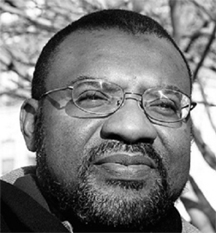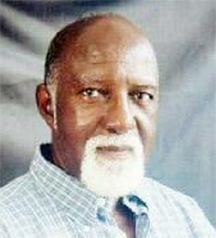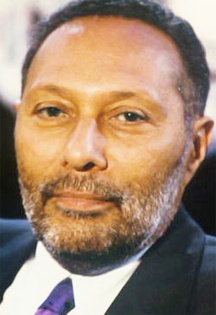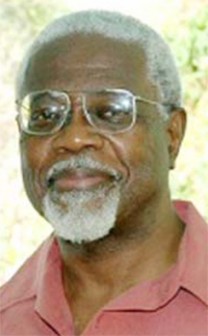West Indian literature or the literature of the Caribbean provides an excellent illustration of the currently accepted understanding of what literature means. What is regarded as the literature of a people? Particularly where West Indian literature is concerned, this is well indicated by what the universities include in the study of the literature.
There is one minor issue over nomenclature. Is it West Indian or Caribbean? The first answer is that the two are used interchangeably and actually refer to the same thing. The second is a notion of geography and geo-politics since for some, the West Indies is the English territories or the islands, while the Caribbean includes French, Spanish and Dutch countries as well, and those mainland territories that are not islands. (Guyana and Belize, for example, would be Caribbean but not West Indies, since they are not islands; Haiti would be the same by virtue of being Francophone, not English).
 But there is a third consideration of the name that is political and used to be a source of some debate. One school of thought rejected ‘West Indian’ since it is linked to colonisation, colonialism and eurocentric attitudes. It is a “perpetuation of Columbus’ mistake” (Richard Allsopp). ‘Caribbean’ is a more appropriate name for the region because it is indigenous; Columbus did not discover the region, but found people already settled there, including the Caribs. As it happens, almost in support of this, there are Amerindian myths that tell of the Carib people creating the region which therefore came to bear their name. However, Mark McWatt in introducing the inaugural issue of the Journal of West Indian Literature (JWIL, 1986) very much reflects a settling of the matter when he points out the synonymous and undisputed usage of both terms, and remarks that the choice of name for the journal reflects what was the general uncontroversial acceptance. Name preferences have not continued as a major issue.
But there is a third consideration of the name that is political and used to be a source of some debate. One school of thought rejected ‘West Indian’ since it is linked to colonisation, colonialism and eurocentric attitudes. It is a “perpetuation of Columbus’ mistake” (Richard Allsopp). ‘Caribbean’ is a more appropriate name for the region because it is indigenous; Columbus did not discover the region, but found people already settled there, including the Caribs. As it happens, almost in support of this, there are Amerindian myths that tell of the Carib people creating the region which therefore came to bear their name. However, Mark McWatt in introducing the inaugural issue of the Journal of West Indian Literature (JWIL, 1986) very much reflects a settling of the matter when he points out the synonymous and undisputed usage of both terms, and remarks that the choice of name for the journal reflects what was the general uncontroversial acceptance. Name preferences have not continued as a major issue.

What then, is West Indian literature? Paula Burnett in her compilation and edition of an anthology of West Indian Poetry published in 1986 included a few poems and songs composed by slaves, folk songs and other selections of oral poetry. Some of these are revolutionary, but there are others which supported the status quo, English governors and the system. These include poems by free Blacks Simon Christian Oliver and Francis Williams. Elsewhere, Carolyn Cooper analyses poetic compositions by enslaved females that seem to celebrate their role as exploited subjects. Burnett’s observation is that both the historical context and the traditional oral poetry must be included in any true anthology of Caribbean verse.
Stewart Brown, in different publications, remarks that the poetic output has changed so drastically that Caribbean literature today is published as much in the cassette recording as in the printed book. He was introducing the contents of an anthology that he edited with Ian McDonald and also speaks for another publication that is still the most definitive document of this ‘changed’ corpus of West Indian poetry. That is Voiceprint, edited by Brown, Mervyn Morris and Gordon Rohlehr and released in 1989 when the extended notion of the literature was still taking root. It was Voiceprint that articulated the inclusion of calypso, reggae, dub and other forms of oral compositions into mainstream poetic study. Before that Morris had already been producing critical studies of the dub poetry of Mikey Smith as a part of the (then) new literature. He was even given to including sound recordings in the publication of both the poetry and the critical introduction. But even long before that (viz 1963), Morris had been a pioneer in mainstream acceptance of the Jamaica Creole (patois) poems of Louise Bennett. Rohlehr too, ‘discovered’ the emergence of dub poetry and other forms of orality in 1971.

All of that is to confirm that notions of West Indian literature extend far beyond the conventional fiction, poetry and drama. Even drama takes us into another world of performance texts. The literature includes work belonging to the oral traditions. The publications mentioned above include known composers of oral forms not previously included but now embraced in the literature. It is no longer an issue that the literature includes performance, and these works are held up to literary and critical analysis.
For a long time the calypso has been so considered. Gordon Rohlehr’s Calypso and Society in Pre-Independence Trinidad is the foremost document of this, but that is by no means the only work. There are several other literary analyses of calypso by others including Louis Regis’ publications on the political calypso. The dub poetry emerged as written verse, but at first confounded conservative critics because it was more given to performance. But soon in the 1970s such artists as Linton Kwesi Johnson, Mutabaruka, Mikey Smith pushed their way into the literature. Similarly reggae compositions and critical studies of them were accorded status. There is even a whole category of work called performance poetry, and Kwame Dawes produced an anthology of Reggae Poetry, including many different types of verses influenced by the music, the rhythms, the preoccupations or even the culture that produced reggae.

As other forms evolved they made the field more complex and reggae developed to include dancehall and its DJ lyrics. Interest in these areas developed into the formation of Reggae Studies at UWI in Jamaica led by the work of Carolyn Cooper and then Donna Hope whose publications on the dancehall recently invoked a counter-position analysing the negative dimensions of the dancehall culture by Ian Boyne.
But the output of the DJs of dancehall became candidates for inclusion in Caribbean literature and certainly the subject of literary and scholarly study. A student of West Indian literature today around the world, whether in the Caribbean, Britain or the USA, may study the dancehall and the calypso alongside the poetry of Walcott and the fiction of Naipaul.
These subjects have also naturally carried over into studies of the sub-cultures that created them and have therefore given rise to Cultural Studies. One of the pioneers of this is Rex Nettleford who began to develop the field as early as his publication of Mirror Mirror, a study of class, colour and identity in the Caribbean. Another prominent scholar early in this area is Stuart Hall. This was as much a cultural as a political study and soon found its way into literature. Because of the close analysis of the arts against the background of their social contexts, the area of Cultural Studies found its way firmly into West Indian literature and is now fully at home in the field.

These studies are indivisible from the musical or poetic off-shoots that the cultural factors produce, and so West Indian literature will now include soca and chutney which are vibrant features of the popular culture in the twenty-first century Caribbean. Literary scholars will have an interest in what is reflected in the way these forms have developed. Similarly, what was previously a part of anthropological interest such as the folk tales, the mythology, Amerindian myths, Anancy Stories, folk songs, proverbs and riddles are now included in the literature of the region.
A major conference on The Quiet Revolutions in West Indian Literature was hosted by the University of Guyana in 2009 whose theme was the wide and varied complexity of the contemporary literature. Presentations in this conference reflected the range of interests in what is called West Indian literature. Comparative literature engaged the French and other non-English works. Film studies and film criticism, and even films themselves are included in the new and varied interests in literary and cultural studies. The Caribbean Film has now found a place as a rapidly developing area still attached to literature departments at UWI at both Cave Hill and St Augustine.





